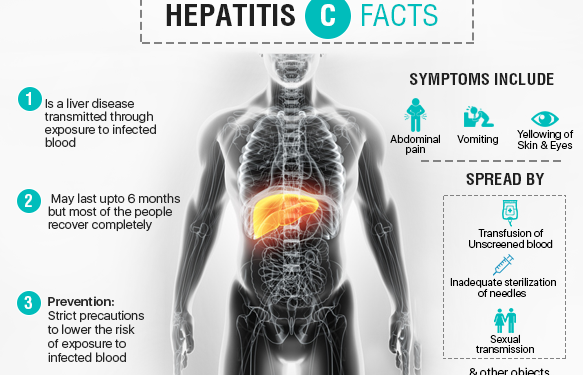Hepatitis, a viral infection that affects the liver, currently kills over 100 000 people every year in the WHO European Region. Globally, every 40 seconds, someone loses their life to Hepatitis B or C – a staggering number, especially given that most of these deaths could have been prevented.
What all hepatitis infections have in common is the inflammation they cause in the liver, with the most common ones caused by hepatitis B and C potentially causing serious health problems such as liver cancer, cirrhosis of the liver and liver failure, the latter resulting in death.
To achieve hepatitis elimination by 2030, new infections of hepatitis B and C must be reduced by 40% globally.
Vaccination, early diagnosis and treatment
To reduce the risk of liver cancer, vaccination prevents hepatitis B, and early diagnosis and treatment play a pivotal role in curbing the progression of hepatitis B and C.
“Liver cancer is the third most common cause of cancer death globally, and the major modifiable risk factors for primary liver cancer are infection with hepatitis B or C virus. However, there’s a lot of stigma surrounding hepatitis, and this needs to be addressed on a local, national and regional scale. Stigma often prevents people from seeking timely testing, treatment and support, perpetuating the cycle of infection and impacting public health efforts including sexual and reproductive health, antenatal care, testing and treatment for viral hepatitis and screening of liver cancer,” notes Dr Hans Henri P. Kluge, WHO Regional Director for Europe. “By fostering greater understanding, empathy, and knowledge across the health-care sector and society as a whole, we can create an environment where people affected by hepatitis are not stigmatized but supported, which will contribute to saving lives.”
“The impact of effective prevention measures, including hepatitis B vaccination, has led to a reduction in disease transmission related to hepatitis B and C over the years,” said Dr Andrea Ammon, Director of the European Centre for Disease Prevention and Control (ECDC). “However, the burden of chronic hepatitis B and C infection in the EU/EEA [European Union/European Economic Area] remains considerable with an estimated 5.4 million chronic infections – with most of these infections undiagnosed and not linked to care.
“In addition, many of those who are diagnosed already have cirrhosis or liver cancer at the time of their diagnosis and deaths from liver cancer have been increasing. To address this disease burden and reach the elimination targets we need to urgently scale up our efforts to tackle these infections and introduce more innovative and effective approaches to diagnosis and treatment.”
Timely interventions to protect lives
Regular screenings and access to affordable diagnostic tests are essential to identify infections at an early stage. Timely interventions, including antiviral therapies, can effectively suppress the viral replication, slow disease progression and decrease the risk of liver cancer development.
Community outreach programmes and accurate information about transmission, prevention and available resources play a key role in dispelling myths and misconceptions.
“Hepatitis affects millions of lives, families and communities across the Region and globally. By addressing the root causes and implementing effective strategies, we can prevent unnecessary suffering, premature deaths and the economic burden caused by hepatitis and liver cancer,” said Dr Nino Berdzuli, Director of the Division of Country Health Programmes at WHO/Europe. “The good news is that the reduction of hepatitis B infections in children is one of the few Sustainable Development Goals health targets that is on track. Now we need to go the extra mile and work towards elimination of hepatitis B and C.”
What you need to know: the ABC of hepatitis
– Avoid A by being careful with food and drink.
Hepatitis A is a threat whenever there is poor sanitation or water that is unsafe. But simply touching a vegetable at a market may leave hepatitis A on your hands, waiting to enter your body through your mouth. Wash your hands frequently with soap and water.
Hepatitis A can pass without treatment, but a bad case can be very unpleasant. The hepatitis A vaccine – 2 doses at least 6 months apart – should protect for at least 20 years.
– Beware of B and C.
Hepatitis B is spread when blood or other bodily fluids from an infected person enter the body of someone who is not infected. Unsafe sex, getting a tattoo, getting pierced or manicured in a place with poor hygiene standards can put you at risk.
Hepatitis C is only passed on through blood-to-blood contact. Unsafe blood transfusions and medical or dental procedures pose the greatest risk of contracting hepatitis C. Both B and C are often called silent diseases as many people experience no symptoms at all, which is why testing is important if you think you may have been exposed. The hepatitis B vaccine, included in routine childhood vaccinations in many countries, offers the best protection. Hepatitis C can be cured, but currently has no vaccine.































Discussion about this post